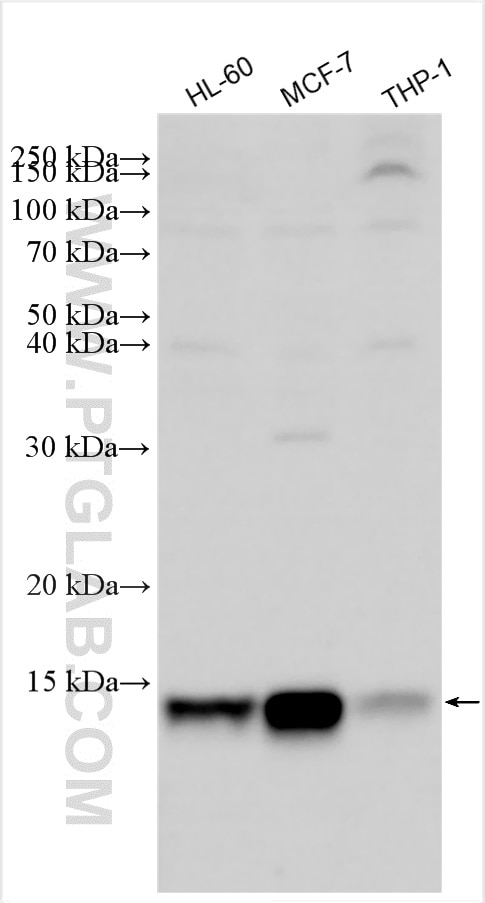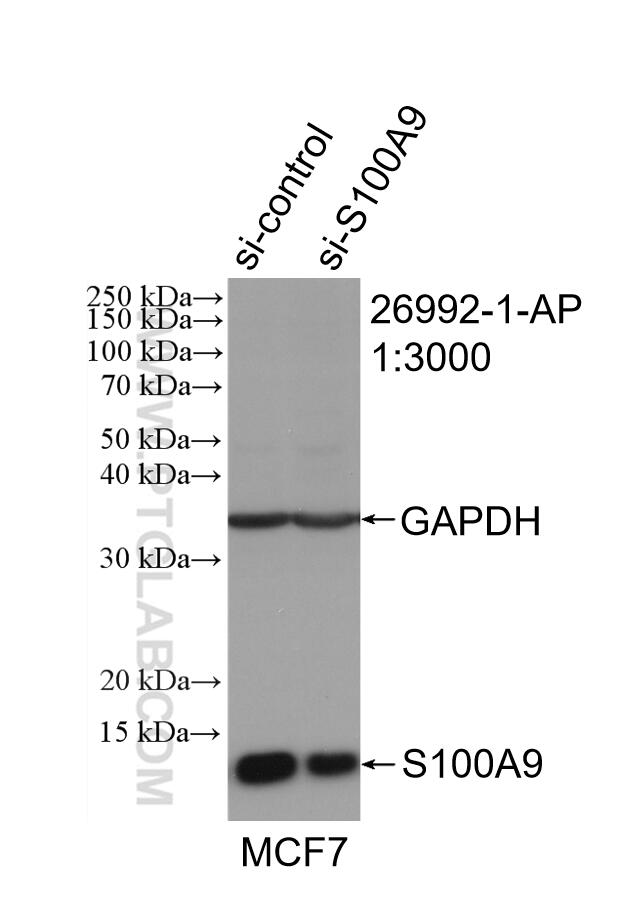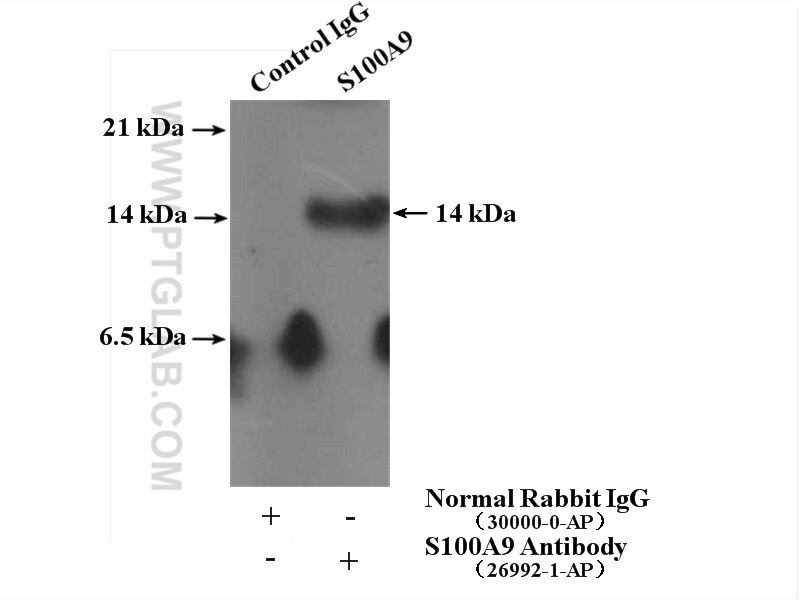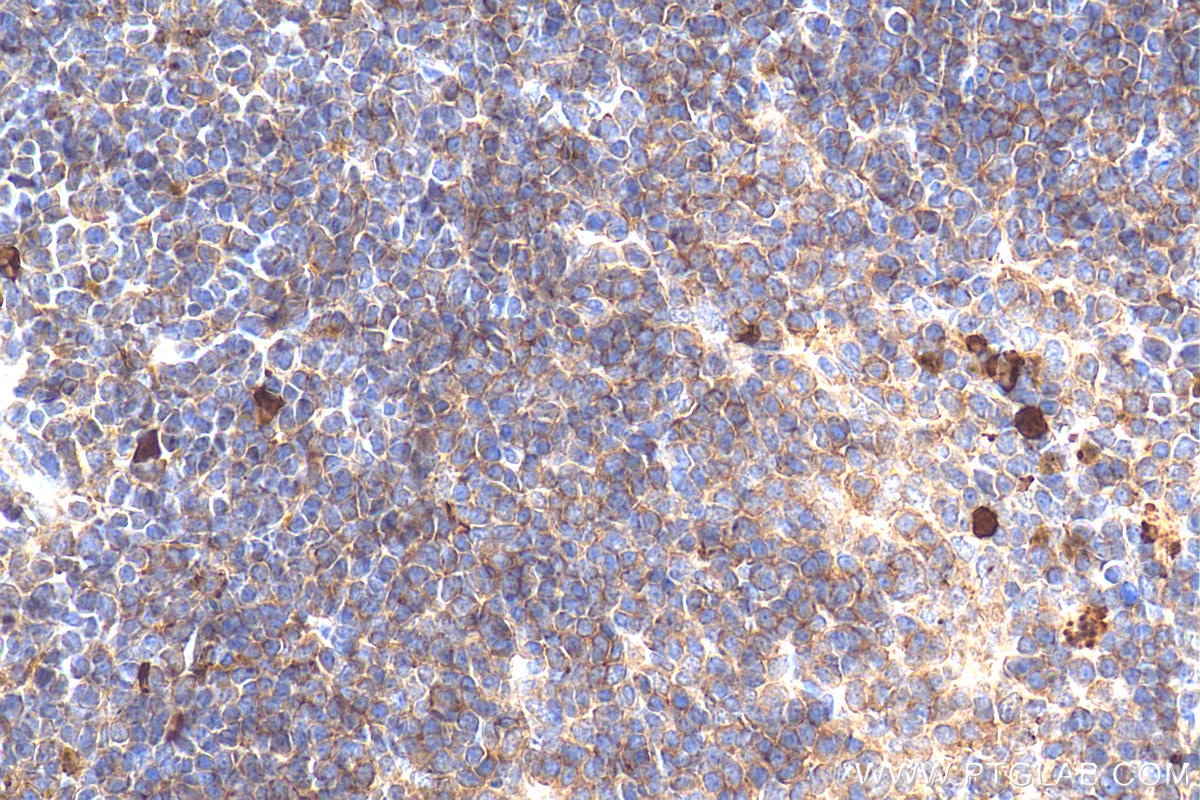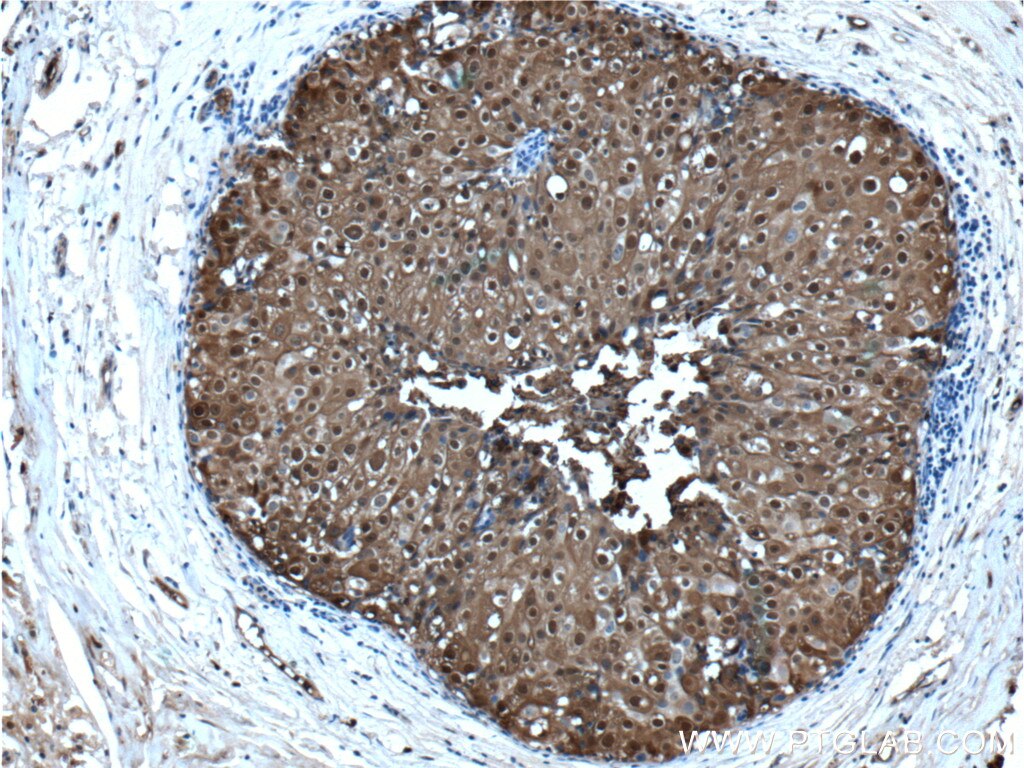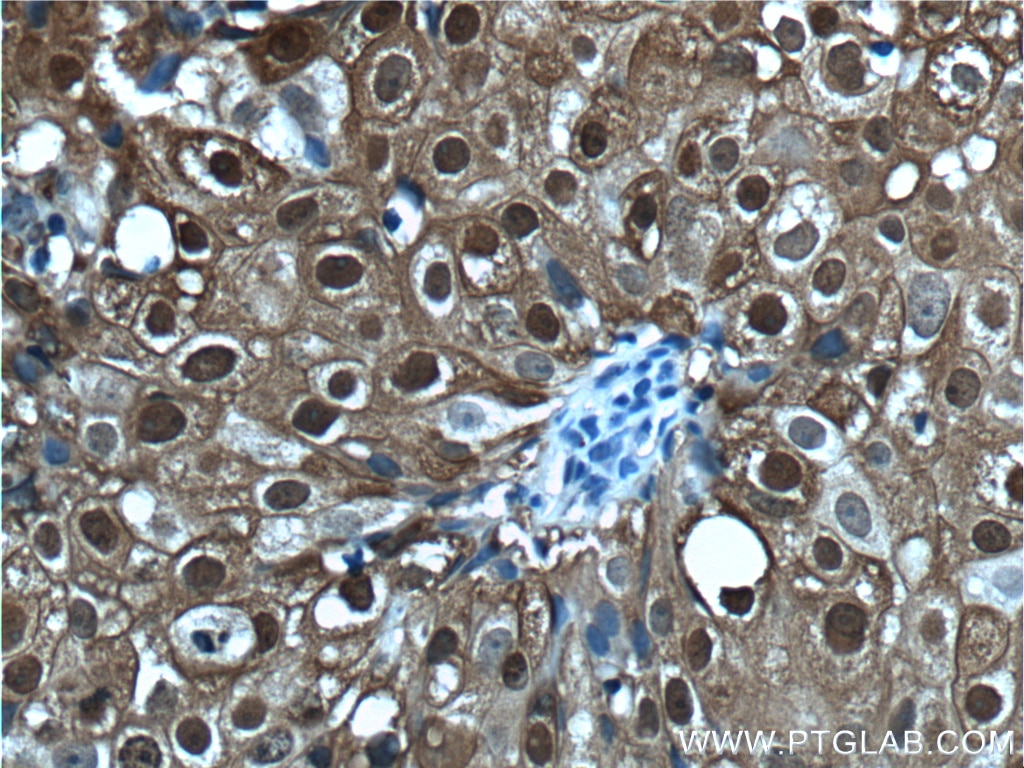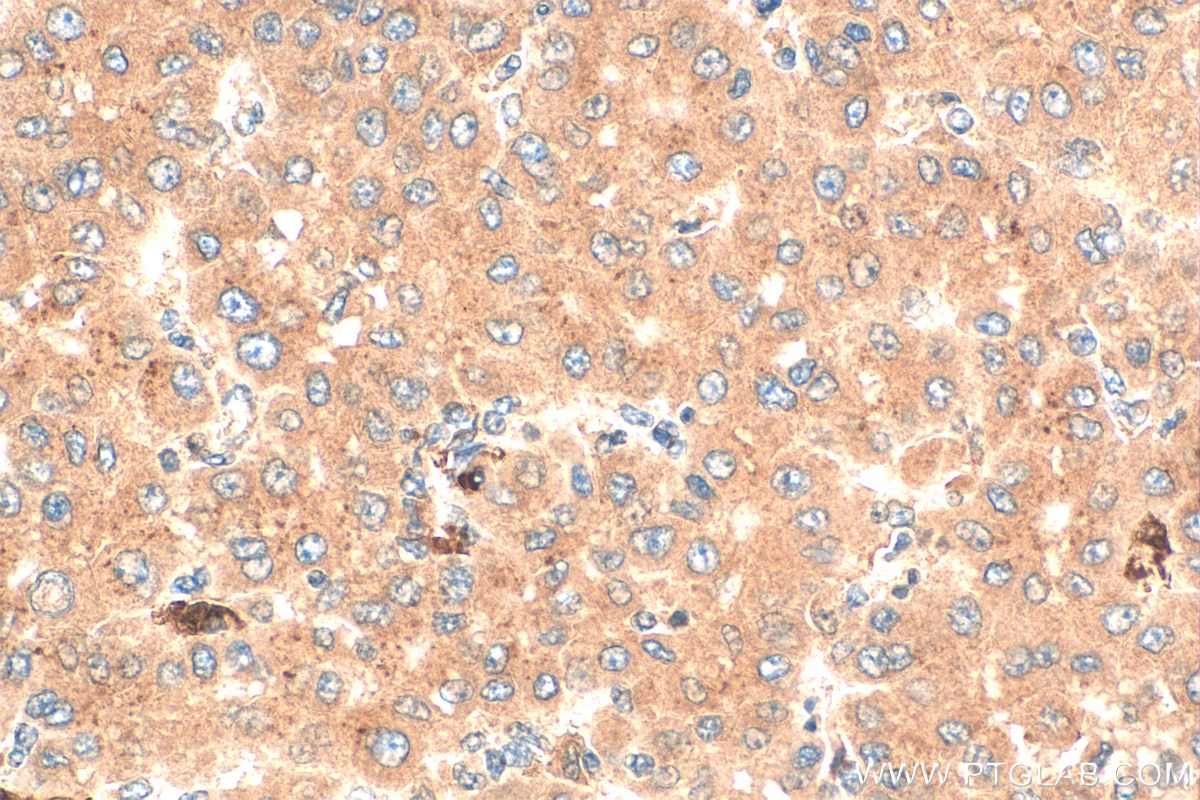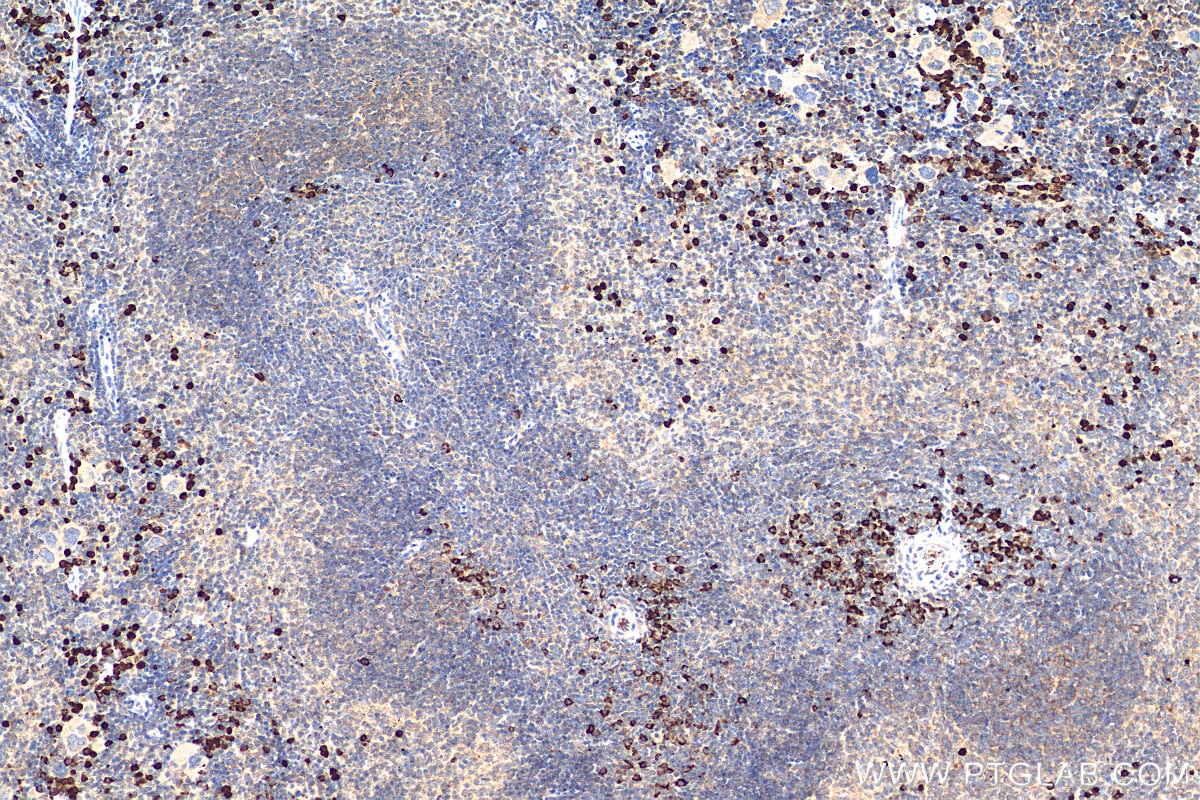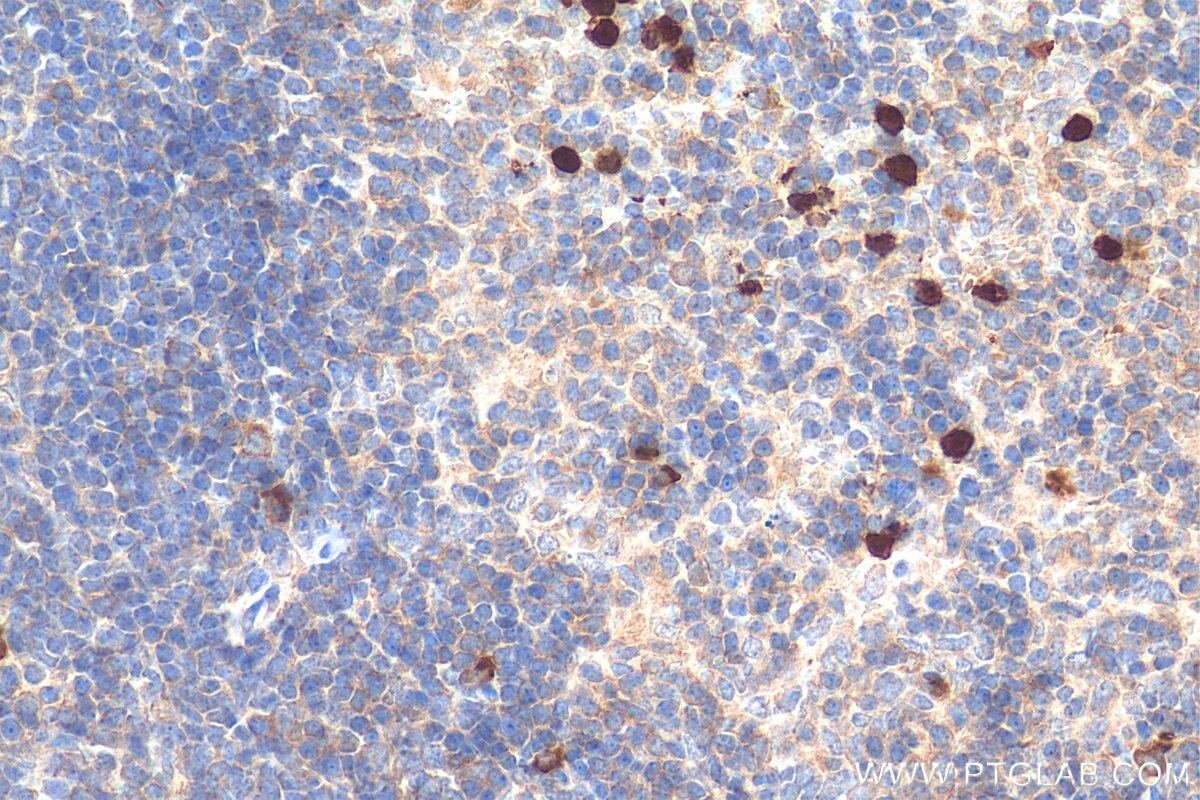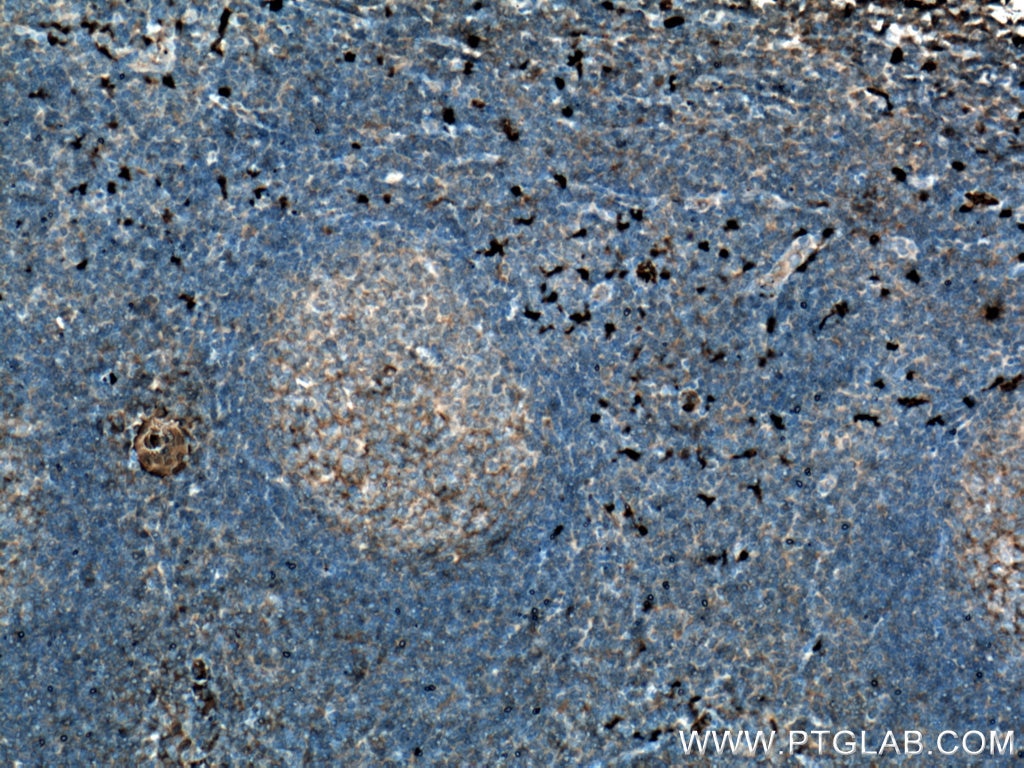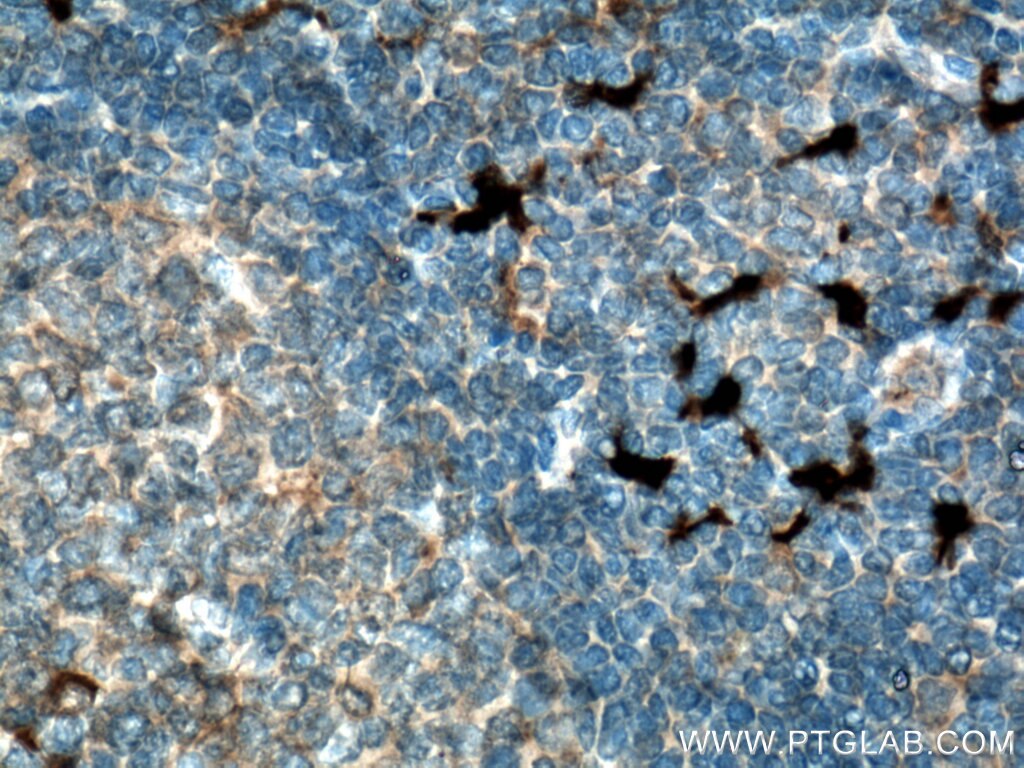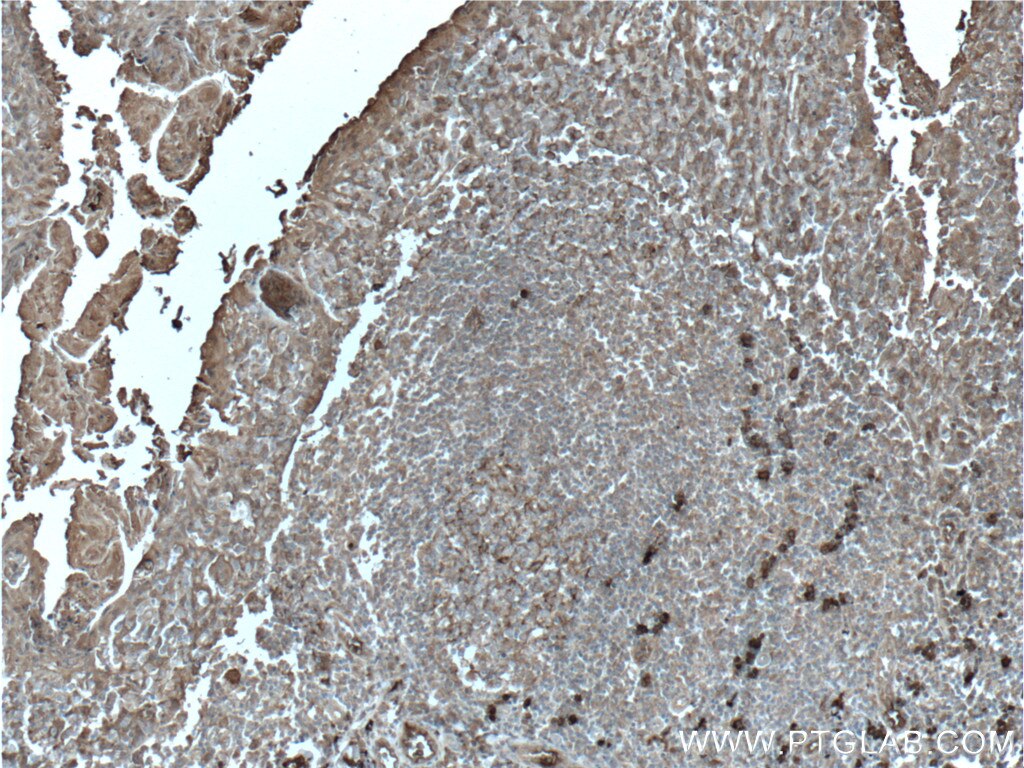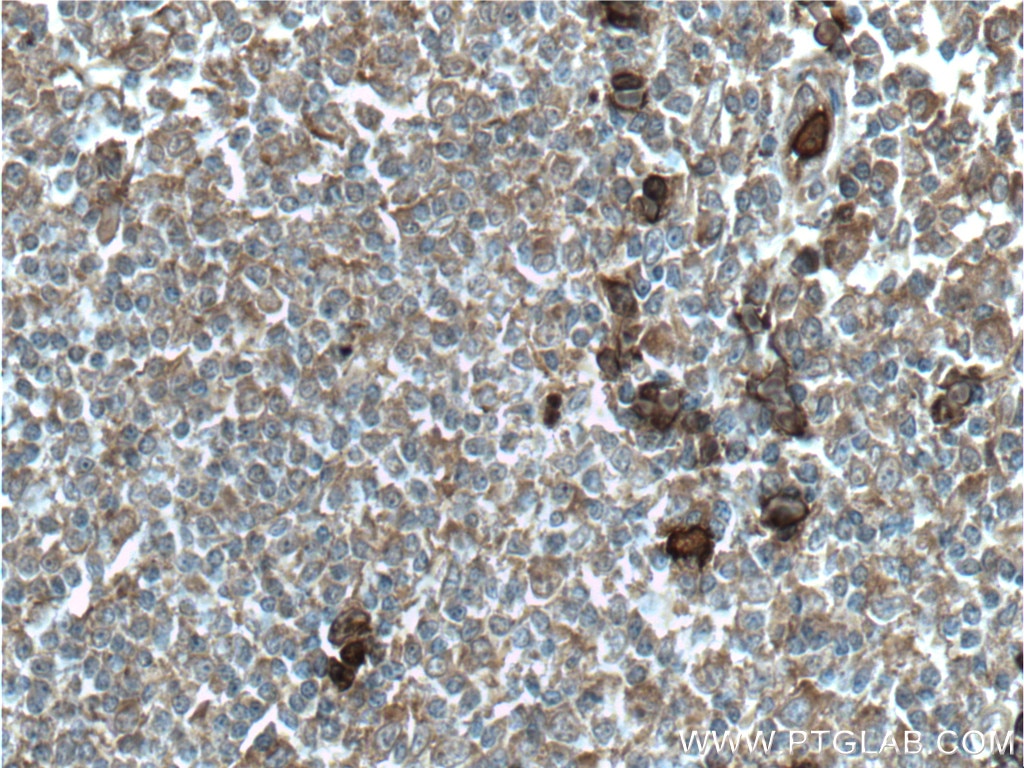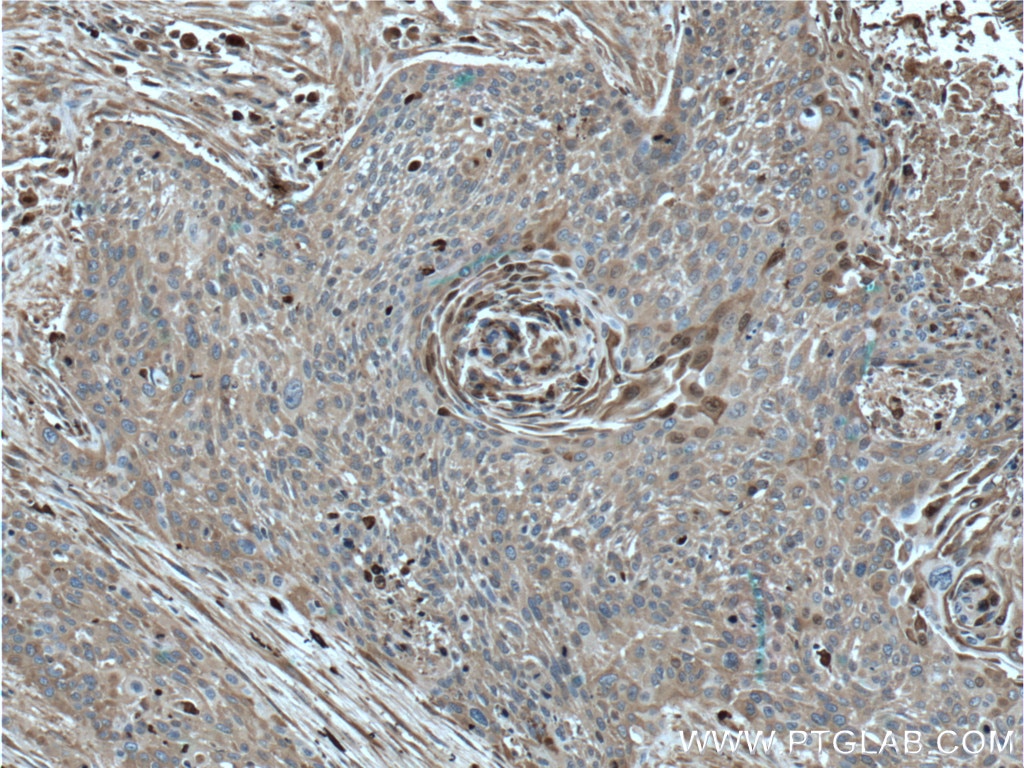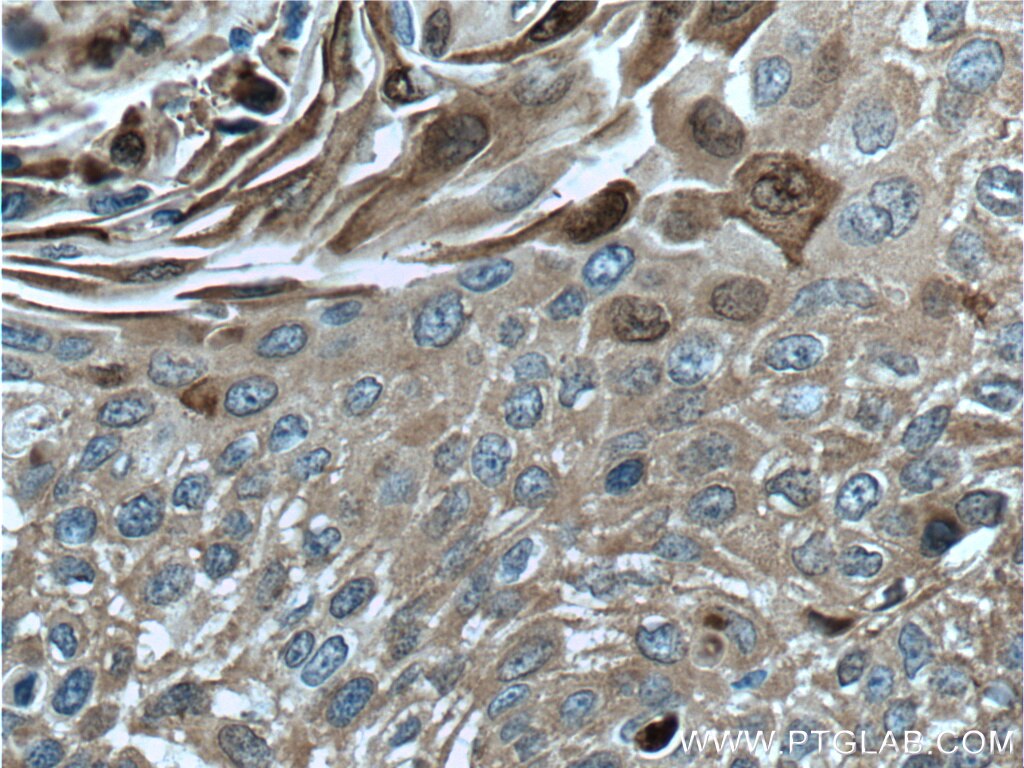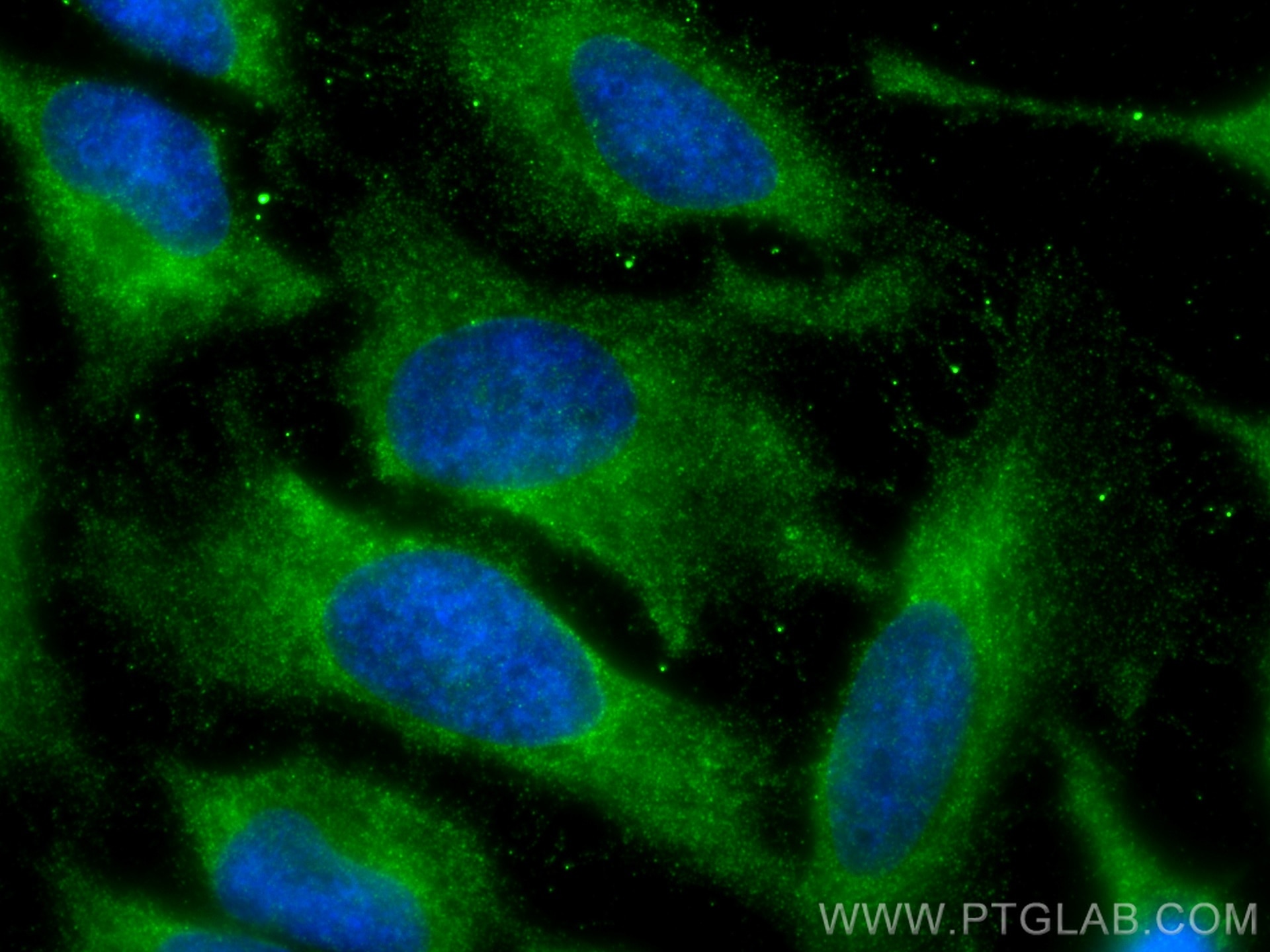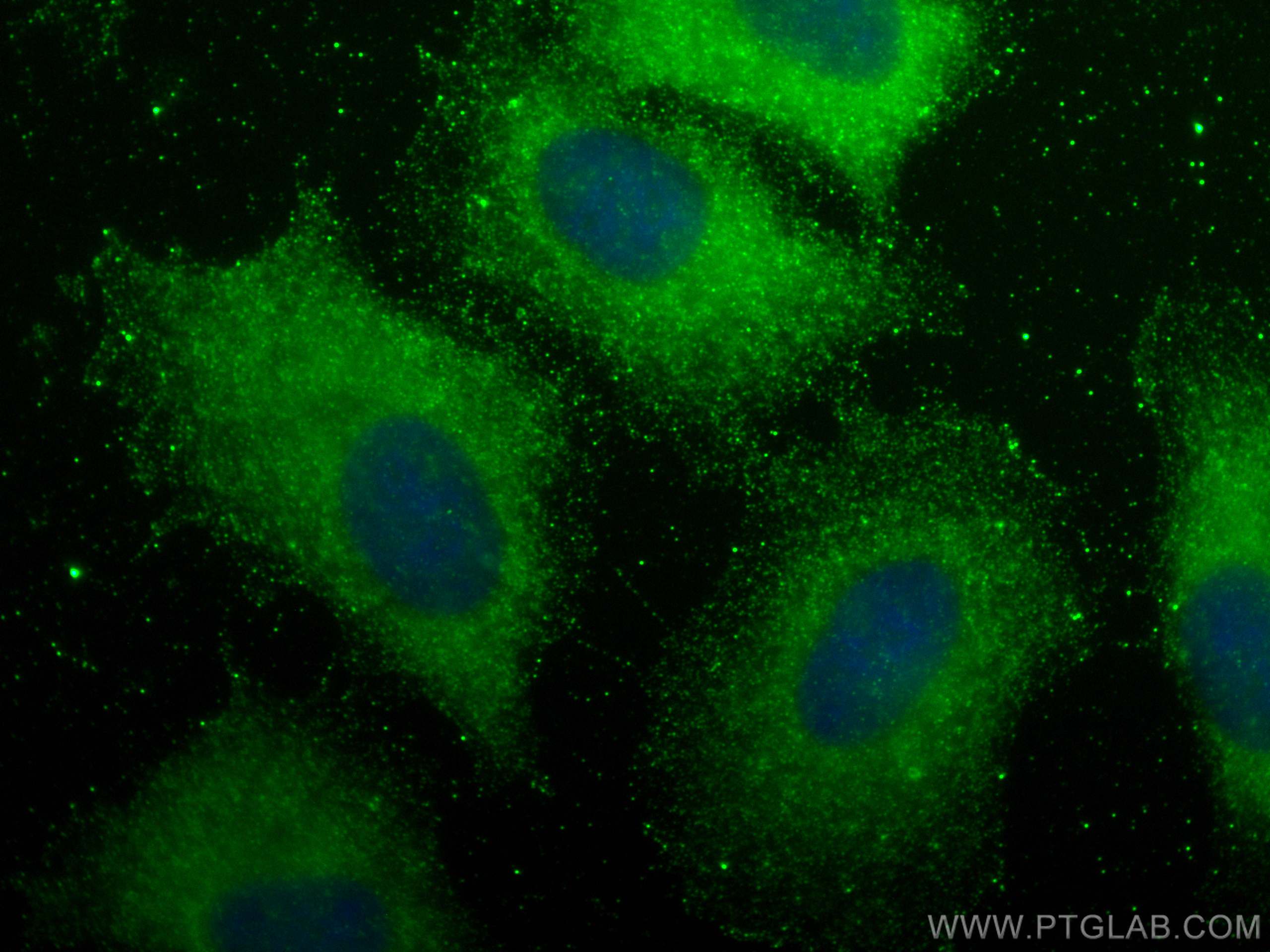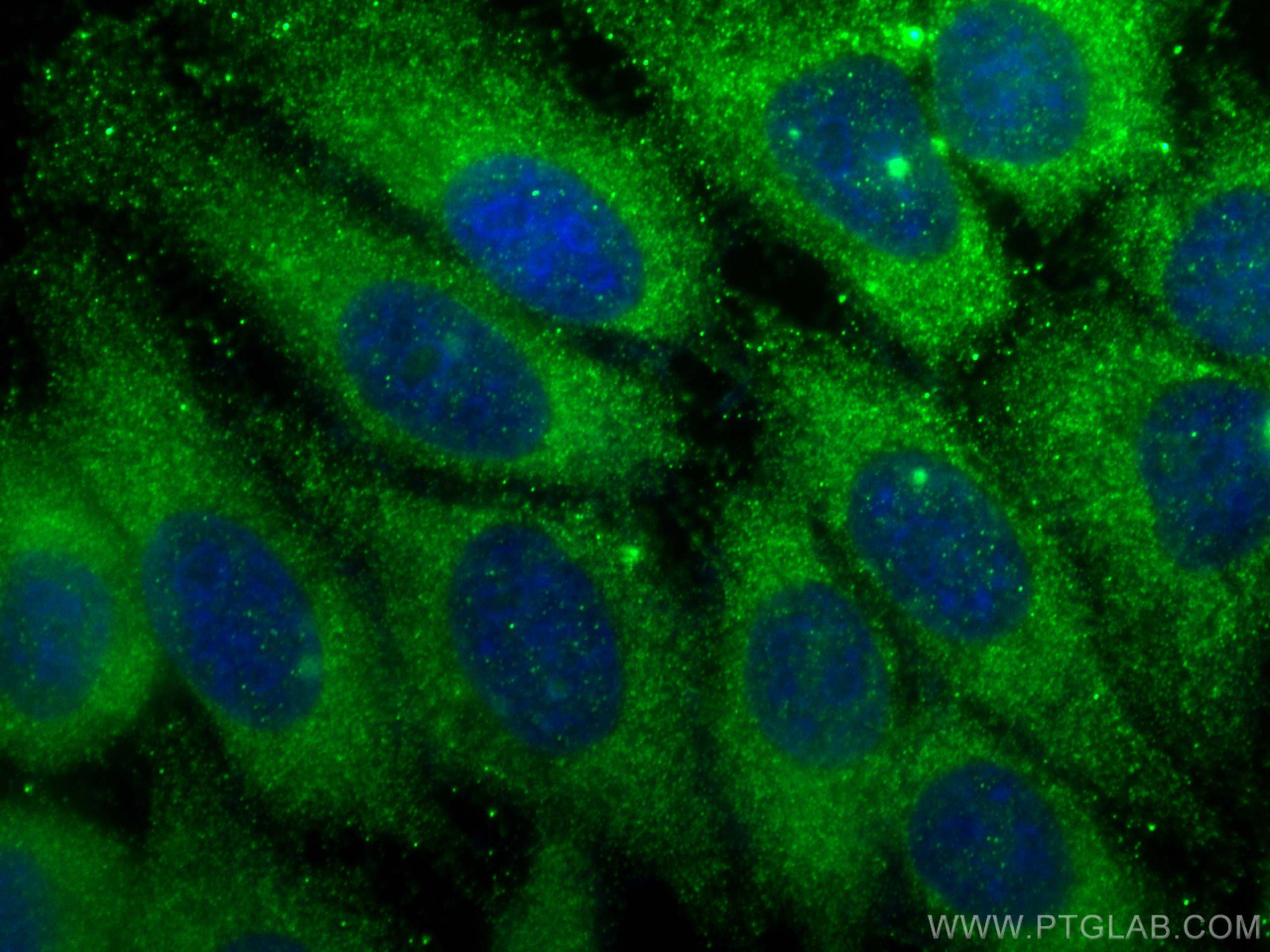- Featured Product
- KD/KO Validated
S100A9 Polyklonaler Antikörper
S100A9 Polyklonal Antikörper für IF, IHC, IP, WB, ELISA
Wirt / Isotyp
Kaninchen / IgG
Getestete Reaktivität
human, Maus und mehr (1)
Anwendung
WB, IP, IHC, IF, FC, CoIP, ELISA
Konjugation
Unkonjugiert
Kat-Nr. : 26992-1-AP
Synonyme
Galerie der Validierungsdaten
Geprüfte Anwendungen
| Erfolgreiche Detektion in WB | HL-60-Zellen, MCF-7-Zellen, THP-1-Zellen |
| Erfolgreiche IP | MCF-7-Zellen |
| Erfolgreiche Detektion in IHC | humanes Mammakarzinomgewebe, humanes Leberkarzinomgewebe, humanes Ösophaguskarzinomgewebe, humanes Tonsillitisgewebe, Mausmilzgewebe Hinweis: Antigendemaskierung mit TE-Puffer pH 9,0 empfohlen. (*) Wahlweise kann die Antigendemaskierung auch mit Citratpuffer pH 6,0 erfolgen. |
| Erfolgreiche Detektion in IF | HeLa-Zellen, A549-Zellen, HepG2-Zellen |
Empfohlene Verdünnung
| Anwendung | Verdünnung |
|---|---|
| Western Blot (WB) | WB : 1:1000-1:4000 |
| Immunpräzipitation (IP) | IP : 0.5-4.0 ug for 1.0-3.0 mg of total protein lysate |
| Immunhistochemie (IHC) | IHC : 1:50-1:500 |
| Immunfluoreszenz (IF) | IF : 1:200-1:800 |
| It is recommended that this reagent should be titrated in each testing system to obtain optimal results. | |
| Sample-dependent, check data in validation data gallery | |
Veröffentlichte Anwendungen
| KD/KO | See 1 publications below |
| WB | See 24 publications below |
| IHC | See 8 publications below |
| IF | See 6 publications below |
| IP | See 3 publications below |
| FC | See 2 publications below |
| CoIP | See 2 publications below |
Produktinformation
26992-1-AP bindet in WB, IP, IHC, IF, FC, CoIP, ELISA S100A9 und zeigt Reaktivität mit human, Maus
| Getestete Reaktivität | human, Maus |
| In Publikationen genannte Reaktivität | human, Maus, Ratte |
| Wirt / Isotyp | Kaninchen / IgG |
| Klonalität | Polyklonal |
| Typ | Antikörper |
| Immunogen | S100A9 fusion protein Ag25764 |
| Vollständiger Name | S100 calcium binding protein A9 |
| Berechnetes Molekulargewicht | 13 kDa |
| Beobachtetes Molekulargewicht | 14 kDa |
| GenBank-Zugangsnummer | BC047681 |
| Gene symbol | S100A9 |
| Gene ID (NCBI) | 6280 |
| Konjugation | Unkonjugiert |
| Form | Liquid |
| Reinigungsmethode | Antigen-Affinitätsreinigung |
| Lagerungspuffer | PBS mit 0.02% Natriumazid und 50% Glycerin pH 7.3. |
| Lagerungsbedingungen | Bei -20°C lagern. Nach dem Versand ein Jahr lang stabil Aliquotieren ist bei -20oC Lagerung nicht notwendig. 20ul Größen enthalten 0,1% BSA. |
Hintergrundinformationen
S100A9 is a calcium binding protein as a member of the S100 family of proteins. S100 proteins are low molecular weight (9 to 14 kDa) intracellular calcium-binding proteins that control key cellular pathways including regulation of the cytoskeleton, cell migration and adhesion, and host oxidative defense. S100A9 may exist as a homodimer, heterodimer with an S100A8 partner (S100A8/A9), or as a heterotetramer with an S100A8 partner(S100A8/A9). S100A8 and S100A9 are found intracellularly in granulocytes, monocytes, and early differentiation stages of macrophages.
Protokolle
| Produktspezifische Protokolle | |
|---|---|
| WB protocol for S100A9 antibody 26992-1-AP | Protokoll herunterladen |
| IHC protocol for S100A9 antibody 26992-1-AP | Protokoll herunterladen |
| IF protocol for S100A9 antibody 26992-1-AP | Protokoll herunterladen |
| IP protocol for S100A9 antibody 26992-1-AP | Protokoll herunterladen |
| Standard-Protokolle | |
|---|---|
| Klicken Sie hier, um unsere Standardprotokolle anzuzeigen |
Publikationen
| Species | Application | Title |
|---|---|---|
Cell Res Comparison of viral RNA-host protein interactomes across pathogenic RNA viruses informs rapid antiviral drug discovery for SARS-CoV-2. | ||
Sci Adv Gut microbiota from patients with arteriosclerotic CSVD induces higher IL-17A production in neutrophils via activating RORγt. | ||
Theranostics Pancreatic ductal deletion of S100A9 alleviates acute pancreatitis by targeting VNN1-mediated ROS release to inhibit NLRP3 activation.
| ||
Theranostics Hepatic RACK1 deficiency protects against fulminant hepatitis through myeloid-derived suppressor cells. | ||
Acta Physiol (Oxf) Keratin 1 attenuates hypoxic pulmonary artery hypertension by suppressing pulmonary artery media smooth muscle expansion. | ||
Mol Cell Proteomics Global Proteome and Phosphoproteome Characterization of Sepsis-induced Kidney Injury |
